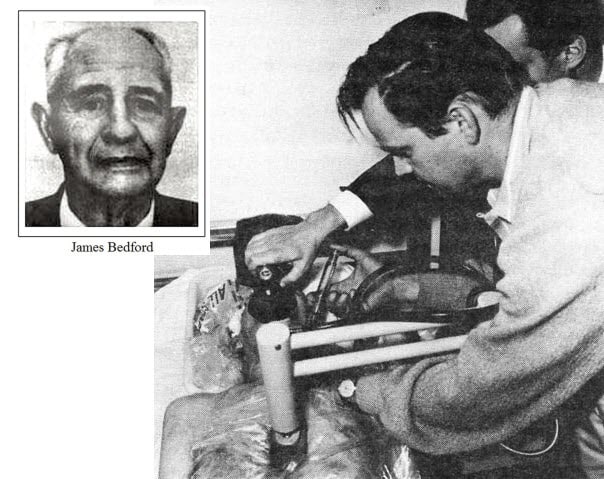50 Years Later: A Frozen Dream of Revival
It’s a mystery that continues to captivate imaginations.
Dr. James Hiram Bedford is the first man to undergo cryonic preservation. He awaits the outcome of his extraordinary gamble with time.
The man is driven by an unrelenting desire to live.
Bedford volunteered to have his body frozen in 1967, with the hope of being revived in 2017.
Now, three years beyond that milestone, the world still wonders what became of the man once considered one of the wealthiest in America.

The Life and Legacy of James Hiram Bedford
James Hiram Bedford was a psychology professor at the University of California and a World War I veteran.
He led an adventurous and accomplished life in the mid-20th century.
Twice married, he traveled extensively, exploring the wilds of Africa. Also the Amazon rainforest, and the cultural landscapes of Greece, Türkiye, Spain, England, Scotland, Germany, and Switzerland.
He was among the first to traverse the Alcan Highway to northwest Canada and Alaska.
In 1967, Bedford’s life took a tragic turn when he was diagnosed with terminal kidney cancer. The disease had spread to his lungs.
With the limited medical knowledge of the time, there was no cure. But Bedford, inspired by Dr. Robert Ettinger’s groundbreaking book The Prospect of Immortality, saw hope in cryonics. A radical new science aimed at preserving the body after death for potential future revival.
Bedford became the first person to undergo the procedure, performed by Robert Nelson, a pioneer of cryonics, on January 12, 1967. Shortly after Bedford passed away from cardiac arrest at the age of 73, his blood was drained and replaced with dimethyl sulfoxide to protect his organs, before being placed in a liquid nitrogen tank cooled to minus 196 degrees Celsius.
The Challenges of Cryonics
Bedford’s attempt at immortality was not the first. In 1966, a woman in Arizona underwent a similar process but was preserved too late, resulting in severe cellular decomposition. Experts speculated that even if revived, her brain would have been irreparably damaged. Despite these challenges, Bedford’s preservation was carried out with greater precision and care.
Before his death, Bedford left $100,000—a significant sum at the time—to fund his preservation. In his final words to Robert Nelson, he stated: “I did not do this with the thought that I would be revived. I did this in the hope that one day my descendants will benefit from this wonderful scientific solution.”
The State of Preservation
In 1991, 24 years after Bedford’s cryopreservation, Alcor Life Extension Foundation, a leader in cryonics, examined his body. Breaking through the metal casing of the tank, technicians found Bedford wrapped in a pale blue sleeping bag secured with nylon straps. Although some discoloration, skin cracks, and bodily damage were observed, his overall condition was deemed remarkable for someone frozen for nearly a quarter of a century. His face appeared younger than his 73 years, though his corneas had turned chalky white, and blood stains lingered around his nose and mouth.
Following the inspection, Bedford was placed in a new sleeping bag and returned to liquid nitrogen for continued preservation.
A Frozen Future
Today, more than 50 years after Bedford’s death, he remains suspended in time, stored vertically alongside 145 other cryopreserved individuals. Despite the promises of revival in 2017, modern science has yet to make the breakthrough needed to resurrect frozen bodies. Bedford’s dream—and the hope of cryonics—remains a tantalizing possibility, waiting for a future where the boundary between life and death can finally be crossed.
